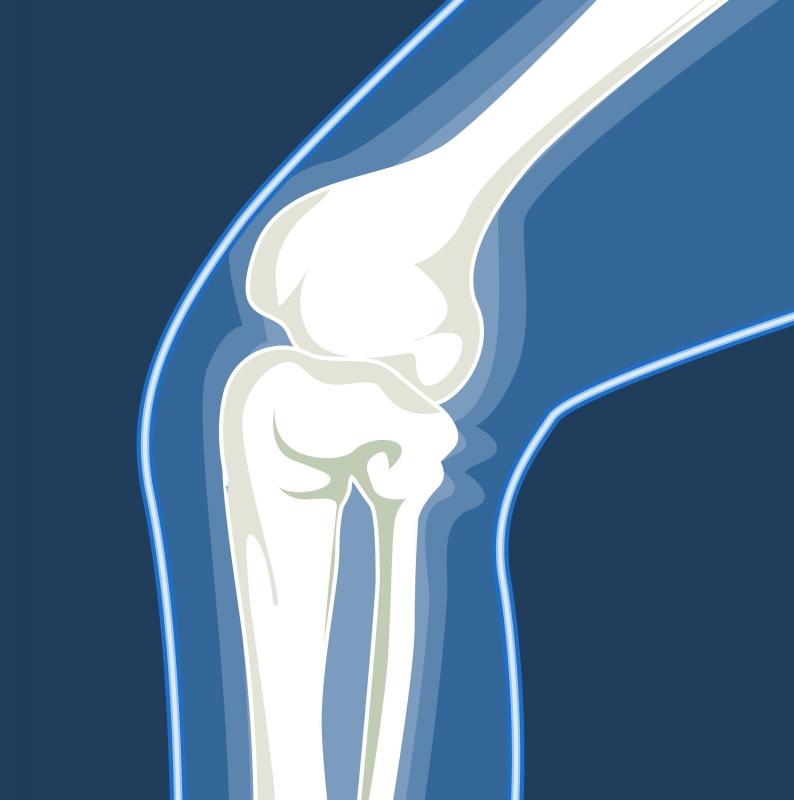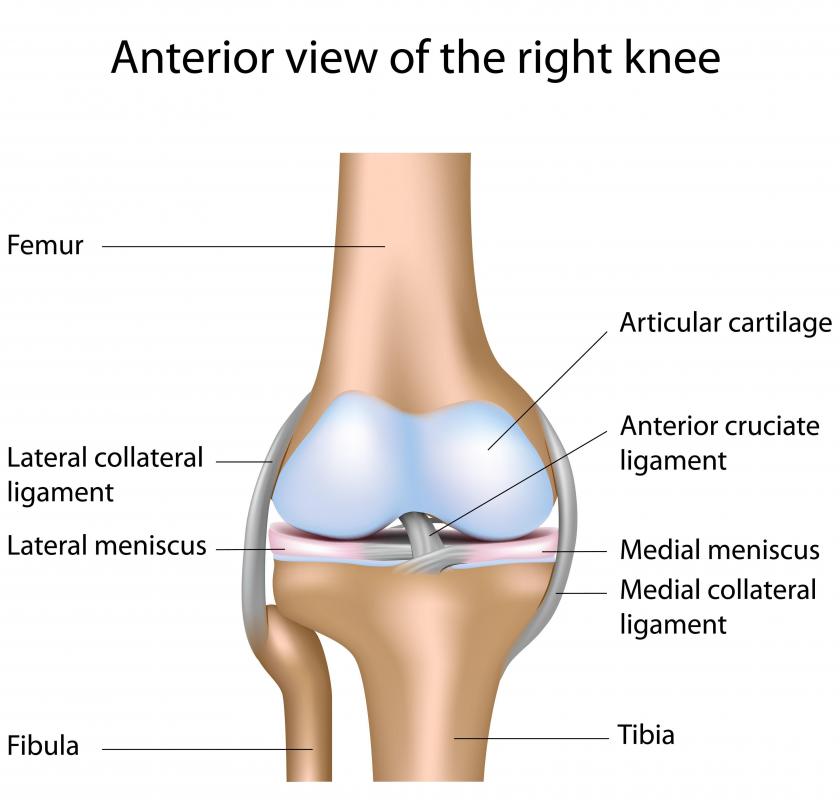At WiseGEEK, we're committed to delivering accurate, trustworthy information. Our expert-authored content is rigorously fact-checked and sourced from credible authorities. Discover how we uphold the highest standards in providing you with reliable knowledge.
What Are the Different Types of Knee Arthroscopy Exercises?
Following arthroscopic surgery to repair knee damage or other problems, an orthopaedic surgeon generally recommends exercises to restore mobility and strength. To regain proper recovery and a full range of motion, the patient should start knee arthroscopy exercises no more than two days after the surgery. In addition to regaining knee strength, most arthroscopic exercises work the legs, quadriceps, hamstrings, and ankles. Exercises are often divided into beginner, intermediate, and advanced levels.
During the beginning stages of the knee arthroscopy exercises, the patient may start with straight leg raises, buttock tucks, and hamstrings and quadriceps contractions. For straight leg raises, the patient must lie flat on his back, bend the uninjured knee, and straighten the recuperating knee. Next, he must raise the recovering knee no more than 6 inches (approximately 15 cm) from the floor, hold the position for five seconds, and then lower the leg. Doctors or physical therapists recommend repeating this exercise 10 times. For the standing version of the straight leg raises, the patient must stand near a wall or a chair for support while moving the leg forward.

Hamstring contractions are also recommended during the initial knee exercise regimen. The patient must lie flat on the back or sit in a chair, with the knees bent at approximately a 10° angle. Then, the person must pull the heel of the recuperating leg into the floor to contract the muscles behind the thigh. Contractions should be held for five seconds, and should be repeated 10 times.

To do the quadriceps contractions correctly, the patient should first roll a towel to place onto the floor, lie on the stomach, and place the ankle of the recuperating knee on the towel. The ankle is then slowly pressed into the towel roll for five seconds to straighten and strengthen the leg, knee, and surrounding muscles. Another beginner’s exercise, buttock tucks involve the patient lying flat on his back and tightening the buttock muscles for five seconds in 10 repetitions.
After a couple of weeks of doing beginner-level movements, the patient should progress to 10 repetitions each of intermediate knee arthroscopy exercises as prescribed by the doctor or physical therapist. Straight leg raises should continue at this stage, followed by different knee exercises. The standing quadriceps stretch requires the patient to stand near a wall for support, bend the recovering knee, and then gently pull the heel toward the buttocks for a five-second stretch. Another exercise to try includes the terminal knee extension, which requires the person to lie flat on his back with a rolled towel placed under the knee. With the support of the towel roll, the patient must gently straighten the knee and hold for five seconds.
During the partial squat exercise, the patient should hold on to a chair or counter, with the feet no more than 12 inches (approximately 30 cm) away from either support. While maintaining a straight back, the patient should try to bend the knees to a 90° angle, hold for 10 seconds, and then rise slowly to relax. Again, the patient should repeat the knee exercise for 10 repetitions.
Advanced knee arthroscopy exercises include more knee bends and leg extensions, as well as additional hamstring stretches. At this stage, the doctor or physical therapist can incorporate step-ups followed by a walking and biking program into the patient’s recovery program. Forward and lateral steps require the patient to step with the recovering leg onto a stool no higher than 6 inches (approximately 15 cm). This helps to improve the strength of the knee.
The doctor may suggest doing 10 repetitions of knee arthroscopy exercises at each level for up to 30 minutes every day, three times per week. After about two or three weeks of progress with the knee arthroscopy exercises, the patient may begin a walking program to restore normal movement. The patient may also use an exercise bike at home or during a physical therapy session, beginning with light resistance. Medical experts recommend walking and biking at least 10 minutes a day during the advanced stages of recovery.
AS FEATURED ON:
AS FEATURED ON:












Discuss this Article
Post your comments